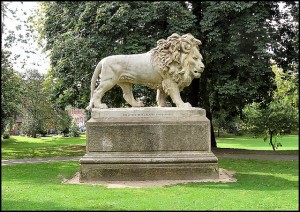 I wrote last week on the IPKat blog about a recent Trademark Trial and Appeal Board (TTAB) case, Harry Winston v. Bruce Winston. It is a likelihood of confusion case between two marks, Harry Winston and Bruce Winston.
I wrote last week on the IPKat blog about a recent Trademark Trial and Appeal Board (TTAB) case, Harry Winston v. Bruce Winston. It is a likelihood of confusion case between two marks, Harry Winston and Bruce Winston.
What I found interesting reading the case is that the TTAB cited the recent Stone Lion Capital Partners, LP v. Lion Capital LLP Federal Circuit case, where the court had found that it is “proper… for the [TTAB] to focus on the application and registrations rather than on real-world conditions, because… the question of registrability of an applicant’s mark must be decided on the basis of the identification of goods set forth in the application.”
When I first read the Lion Capital case a few months ago, I thought that it might become a useful case for trademark attorneys in their every day practice. When an applicant wishes to register a trademark, he or she must register it in one or more of the different 45 classes for goods or services, and the application must contain an identification of the goods and services for each of the classes.
As an attorney, I write such descriptions when a client wishes to register a trademark, or when a client receives an office action letter from the USPTO asking him or her to clarify the wording of the identification of goods and services. This happens often when a client is located in a foreign country and filed an international trademark registration using the Madrid system of international registration. The USPTO has precise rules about how the description has to be written and therefore the identification of goods and services often have to be rewritten for the mark to be registered in the U.S.
Let’s go back to the Lion Capital case. When an investment management company, Stone Lion Capital Partners , filed an intent-to-use application to register the mark STONE LION CAPITAL, another investment management company, Lion Capital LLP opposed the registration under Section 2(d) of the Lanham Act (the Trademark Act) claiming that the proposed mark would likely cause confusion with the registered marks LION CAPITAL and LION.
When the TTAB and the Federal Circuit Court are asked to decide whether there is indeed a likelihood of confusion between two marks, they use the thirteen so-called “du Pont” factors, named after a famous 1973 case, to determine if indeed there is a likelihood of confusion. The third factor is the similarity or dissimilarity of the trade channels (are the goods and services sold in the same places?)
The TTAB had found that neither the application nor the registration contained any limitations on the channels of trades and classes of purchasers. In other words, as the descriptions contained no restrictions, the TTAB had to presume that they were offered in the same places, to the same prospective clients.
This is a case to keep in mind when writing a goods or services description if an applicant is seeking to register a mark which may be considered similar to a registered mark. Limiting the channels of trades in the description may allow, if necessary, the applicant to successfully argue later that the marks are not legally identical.
Image is Stone Lion Bridge courtesy of Flick user Brian under a CC BY-ND 2.0 license.



